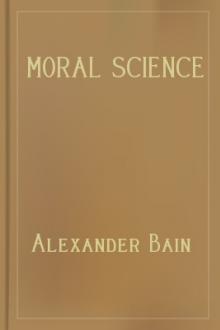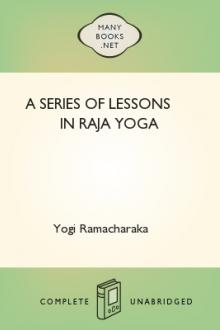Man's Fate and God's Choice by Bhimeswara Challa (feel good fiction books .txt) 📕

Read free book «Man's Fate and God's Choice by Bhimeswara Challa (feel good fiction books .txt) 📕» - read online or download for free at americanlibrarybooks.com
- Author: Bhimeswara Challa
Read book online «Man's Fate and God's Choice by Bhimeswara Challa (feel good fiction books .txt) 📕». Author - Bhimeswara Challa
Like almost every human institution, the State too is built on fear, doubt and distrust of human personality. Unless the very character of human aptitudes, inclinations and traits change, nothing can make a decisive difference. By State, we also assume a centralized trickle-down authority, in which our lives are micro-managed by strangers sitting in a far off place, ostensibly to protect us from our dark desires. Being aggressive has become part of being human and human inventiveness alone cannot erase it. The Austrian zoologist Konrad Lorenz in his book On Aggression (1963), argues in detail how “both animals and humans are equally endowed with aggressiveness” and that in the case of animals, “aggressive behavior
265 Chris Hedges. On War. The New York Review of Books, USA. 16 December 2004. p.12.
does not lead to the defeat of the other power but becomes a bond of solidarity between the animals.” As a result, “aggressive behavior functions to maintain order in the animal world”.266 In contrast, when it comes to us humans, the outcome of aggression is usually the killing of the adversary, and even war, in certain circumstances. In other words, animal aggressiveness is without malice, and human aggressiveness is dripping with it. Steven
Pinker argues that human violence cannot be understood without a thorough understanding of the mind. There are both biological and social causes of war and violence. Under certain provocations and promptings, man is capable of both violence and compassion, of waging war and peaceful conflict resolution. Some call human violence a ‘testosterone surge’, which is “somewhat of a shutdown of the brain which leads to a burst of energy that increases one's ‘manliness’ factor. The entire body experiences a takeover of pure, unbridled adrenaline.
Surely, this is a trait left over from our more primal ancestors, one that was probably helpful when saber-toothed tigers popped out from a bush.”267 Whether it is testosterone or sheer survival, evolution or environment, the footprints of human violence are too indelible to be explained away.
Seeds of self-destruction
While one can debate about how ‘original’ human violence is, there is very little doubt about the fact that the way it has unraveled through human history has radically altered the character of human essence. We cannot get away from the stark truth that man is by far the most violent form of life on earth. Whichever way we differentiate one form of violence from another, and call it suicide or homicide, murder or martyrdom, genocide or ecocide, they all point to an uncontrollable urge to intentionally terminate one’s life through self-directed injurious acts. Whether it is a byproduct of evolution or Nature’s design to contain human delusions of cosmic grandeur, this trait appears deeply implanted in the human psyche. One could also speculate if this has got something to do with our pursuit of bodily indestructibility. If Nature decided to deny eternity to living beings and if human endeavor becomes a threat to that design, then destruction becomes a law of Nature, and the most environmentally economic destruction is self-destruction. Arthur Koestler (Darkness at Noon, 1940) said that mankind is afflicted with a mental disorder that drives us to self- destruction. It is akin to what the Japanese call seppuku or hara-kiri, collective ‘stomach- cutting’. But perhaps we are being too hard on ourselves; maybe we are acting as a proxy to Nature and really doing its work by killing ourselves. Maybe this is all part of a grander story. Some thinkers like H.G. Wells have argued that there has been a seismic change in the conditions of the universe and that it signals the ‘end of being’. And for that to actualize, man must perish. Perhaps that is why we feel no shame or remorse; on the contrary, we seem to enjoy — even relish — doing things that are palpably harmful for us. But it is not the exclusive preserve of psychologically dysfunctional people; it embraces the ordinary lot, not the stupid and the senseless, but the sober and the sane, not the thoughtless and the vengeful, but the intelligent and the astute. Now, there is no more any predictable or preventable ‘pattern’ for suicidal behavior; nor any clear psychiatric correlates. Soon, it could be the first
266 Cited in: Miroslav Pecujlic, Gregory Blue and Anouar Abdel-Malek (eds.). Science and Technology in the Transformation of the World – Volume 1. Section III Biology, medicine and the future of mankind. 1982. The United Nations University. Accessed at: http://www.unu.edu/unupress/unupbooks/uu39se/uu39se09.htm
267 David LeClaire. Building Bridges: Testosterone Surges! 1998. Issue 26 (of 43). Accessed at: http://www.sideroad.com/bridges/column26.html
impulse and response to any annoyance, difficulty or friction that disturbs and agitates our mind. It almost seems to be a major evolutionary or genetic mutation; the way ‘natural selection’ has come to operate as ‘natural corrective elimination’ to contain human rapacity. Evolution, some say, is a continuous process and that, contrary to earlier view, we are not the same as our ancestors, and that the pace of human evolution has actually hastened in modern times. And that we are likely to be very different a millennium or two from now, that is, if we are still around. Evolution itself is the product of two opposing forces, and in the instant case it could well be between self-preservation and self-destruction. Although the ‘how’ is unclear, the outcome of this could heavily influence the shape of the species. Seething with anger and alienation, afflicted with masochism or intoxicated with martyrdom, we do not seem to care what happens to us, and that includes others, even the near and dear.
Paradoxically, that runs parallel with our drive for earthly eternity and obsession with physical appearances and looking ‘good’.
Theories are aplenty to explain this paradox, like the Freudian hypothesis that humans have an innate death drive that impels them to pursue their own downfall and death. What we should truly be worried about are not weapons of mass destruction, but about the seeds of self-destruction sprouting inside all of us. The latter is more likely to be the cause of human enfeeblement or extinction than the former. Our whole attitude towards each other and towards Nature is symptomatic. Mass destruction is but self-destruction on a mass scale. The volcano of human violence might be dormant or active, but it is there. And despite recent advances in human psychoanalysis and insights into our motivational drives, we know no means to predict or preempt its eruption. Unable to adjust to what we call technology-driven
civilization, our instincts and emotions are showing up the only way they can: self-destructive behavior. And, as our technological power scales new heights and breaks through new frontiers, that pattern of behavior will only deepen and spread. Of all the manifestations of violence, none is more perplexing and tragic as self-destruction, the most prominent forms of which are suicide and homicide. Should there be some kind of observant intelligent beings ‘out there’ in the cosmos looking down at us, they must wonder ‘why these silly puny beings on earth quarrel so much for so little and seem so determined to kill themselves?’ But the tongue-in-cheek answer is “you are not ‘human’ and you do not know what being alive on earth requires.” Other than the very meaning of life, perhaps the most enduring mystery is why humans, with so much pain, indignity and decay, not knowing what life is, cling so pathetically and pathologically to life. Much of life is a struggle between survival and suicide, giving life and taking life; and there is no way anyone can tell which of the two will triumph, or when, how and why. Is it the inertia of the known or the fear of the unknown? Is it the embrace of liberty or the rejection of freedom? Is it flight from the ‘absurdity’ of everyday life or willful exploration of the other world? Is it, as Chesterton said, a refusal to take an interest in existence or in the logical finale to rationality? Who has the inalienable right over his own life? And, finally, is there a divine or a devilish design behind the galloping increase and trivialization of suicide? Looking at the insidious spread and speed, and the all- encompassing nature of suicide, such questions crowd the mind. The French philosopher and Nobel writer Albert Camus said, “There is but one truly serious philosophical problem, and that is suicide. Judging whether life is or is not worth living amounts to answering the
fundamental question of philosophy.”268 Equally, one might say that another philosophical and metaphysical question, even greater than why so many choose self- termination, is why
268 Albert Camus. QuoteDB. Accessed at: http://www.quotedb.com/quotes/1939
so many more choose to continue with life given the meaningless monstrosity, the painful ritual that living entails. Increasingly, the moral difference between those who choose death and those who choose to accept life is crumbling. Our emotions about death are now more mixed up than ever before. Self-destructiveness has always been a part of the human psyche; so is snuffing out someone else’s life. Both are different forms of murder. Enforced death has always been an option. Concepts like chastity, family honor have always been viewed as more worthy than life. Some pain, physical and mental, has always been dreaded more than death and dying. Despite the visceral instinct for self-survival, the dark shadow of death appears, for a growing number of people, sunnier than the dark reality of daily life. The motives and triggers have broadened, from the most ridiculous to the most existential. What we now face is a toxic cocktail of suicide, murder, martyrdom, religion, and revenge. Some people are actually eager to blow themselves apart, but in the company of the greatest number of their ‘enemies’. We read about people lining up in hundreds to be recruited and trained for this ‘job’. We need to ponder deeply over this phenomenon. What is normal and routine for most people, for some mysterious reasons, suddenly becomes a matter of life and death, a banal insult or a setback becomes an intolerable affront for some. Instead of feeling guilty, more and more people feel murder is martyrdom. But martyrdom is not necessarily religious; those who kill and get killed are also called martyrs.
The American writer and satirist Ambrose Bierce wrote that, “There are four kinds of homicide: felonious, excusable, justifiable, and praiseworthy.”269 The character of killing and its morality is a function of the place and person;





Comments (0)